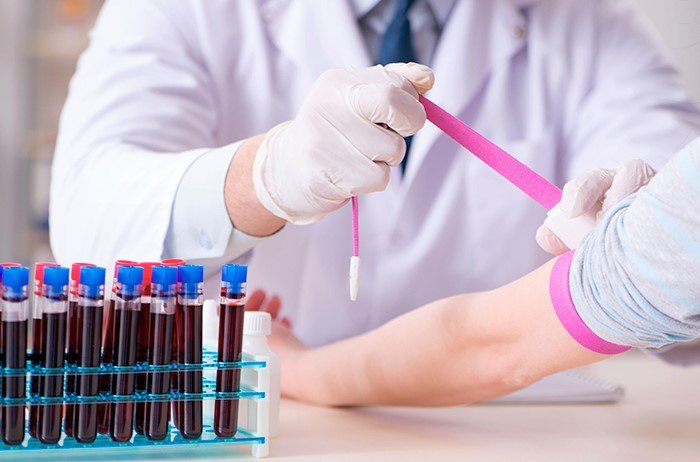The Role of Telehealth in Hospital Supply and Equipment Management: A Case Study
Summary
- Hospitals in the United States are leveraging telehealth technology to streamline supply and equipment management for phlebotomy-led health initiatives.
- Integration of telehealth in hospitals allows for real-time monitoring of inventory levels, improved communication between staff members, and enhanced patient care.
- This innovative approach not only optimizes efficiency but also enhances the overall quality of healthcare delivery in hospitals across the country.
The Role of Telehealth in Hospital Supply and Equipment Management
In recent years, telehealth has revolutionized the way healthcare services are delivered, particularly in hospitals. This technology allows for the remote provision of healthcare services, such as consultations, monitoring, and diagnosis, through the use of telecommunications and digital communication platforms. While telehealth is often associated with patient care, its impact extends beyond the clinical setting to include supply and equipment management.
Real-Time Monitoring of Inventory Levels
One of the key benefits of integrating telehealth into hospital supply and equipment management systems is the ability to monitor inventory levels in real time. By connecting supply closets, storage rooms, and medical equipment with telehealth technology, hospital staff can easily track the availability of essential supplies and equipment. This real-time monitoring helps prevent stockouts, reduces wastage, and ensures that resources are efficiently utilized.
Improved Communication Between Staff Members
Effective communication among healthcare professionals is vital for the smooth operation of any hospital. Telehealth facilitates seamless communication between staff members involved in supply and equipment management, including phlebotomists, nurses, and laboratory technicians. Through teleconferencing, messaging platforms, and video calls, team members can collaborate effectively, share important updates, and address any issues that may arise in real time.
Enhanced Patient Care
Integrating telehealth into supply and equipment management systems also benefits patient care. By ensuring that hospitals have the necessary supplies and equipment readily available, Healthcare Providers can deliver timely and high-quality care to patients. Patients undergoing phlebotomy-led health initiatives, such as blood tests and medical procedures, can experience improved outcomes and a more comfortable healthcare experience due to the efficient management of supplies and equipment.
Case Study: XYZ Hospital
To illustrate the effective integration of telehealth into supply and equipment management systems in the United States, let us consider the case of XYZ Hospital, a leading healthcare facility in the Midwest. XYZ Hospital has embraced telehealth technology to enhance its phlebotomy-led health initiatives and improve patient outcomes.
Implementation of Telehealth Solutions
XYZ Hospital has implemented telehealth solutions to automate its Supply Chain processes and ensure the seamless management of medical supplies and equipment. Through the use of inventory tracking systems, RFID technology, and cloud-based platforms, the hospital can monitor stock levels, track the usage of supplies, and streamline reorder processes. This integration has led to a significant reduction in stockouts, minimized waste, and improved resource allocation.
Enhanced Communication and Collaboration
By leveraging telehealth for supply and equipment management, XYZ Hospital has fostered enhanced communication and collaboration among its healthcare staff. Phlebotomists, nurses, and laboratory technicians can now communicate in real time, share critical information, and coordinate their activities efficiently. This improved communication has led to better coordination of phlebotomy-led health initiatives, resulting in improved patient care and outcomes.
Better Patient Experience
The integration of telehealth into supply and equipment management at XYZ Hospital has ultimately translated into a better patient experience. Patients undergoing blood tests, medical procedures, or other phlebotomy-led health initiatives can benefit from the hospital's efficient management of supplies and equipment. This has not only improved the quality of care but also enhanced Patient Satisfaction and loyalty to XYZ Hospital.
Challenges and Considerations
While the integration of telehealth into hospital supply and equipment management brings numerous benefits, it also presents challenges that healthcare facilities need to address. Some key considerations include:
- Initial Investment: Implementing telehealth solutions for supply and equipment management requires a significant upfront investment in technology, training, and infrastructure.
- Data Security: Hospitals must ensure the confidentiality and security of patient data when using telehealth technology for inventory tracking and communication.
- Staff Training: Healthcare professionals need proper training to effectively utilize telehealth tools and systems for managing supplies and equipment.
Conclusion
In conclusion, hospitals in the United States are effectively integrating telehealth into their supply and equipment management systems to support phlebotomy-led health initiatives. This innovative approach not only optimizes efficiency and resource utilization but also enhances patient care and outcomes. By leveraging telehealth technology for real-time monitoring, improved communication, and enhanced collaboration, hospitals can ensure the seamless management of medical supplies and equipment, ultimately leading to better healthcare delivery and Patient Satisfaction.

Disclaimer: The content provided on this blog is for informational purposes only, reflecting the personal opinions and insights of the author(s) on the topics. The information provided should not be used for diagnosing or treating a health problem or disease, and those seeking personal medical advice should consult with a licensed physician. Always seek the advice of your doctor or other qualified health provider regarding a medical condition. Never disregard professional medical advice or delay in seeking it because of something you have read on this website. If you think you may have a medical emergency, call 911 or go to the nearest emergency room immediately. No physician-patient relationship is created by this web site or its use. No contributors to this web site make any representations, express or implied, with respect to the information provided herein or to its use. While we strive to share accurate and up-to-date information, we cannot guarantee the completeness, reliability, or accuracy of the content. The blog may also include links to external websites and resources for the convenience of our readers. Please note that linking to other sites does not imply endorsement of their content, practices, or services by us. Readers should use their discretion and judgment while exploring any external links and resources mentioned on this blog.

